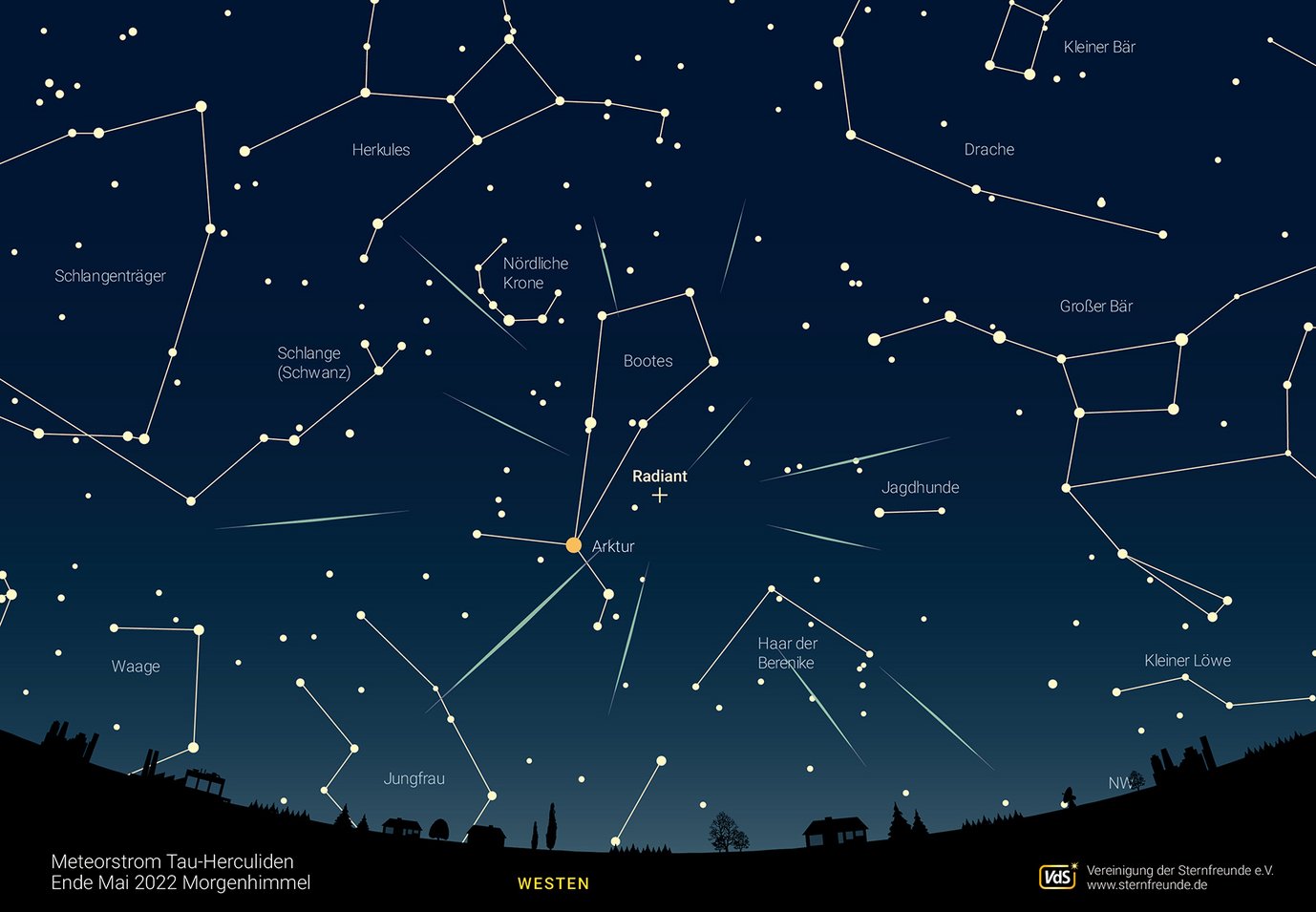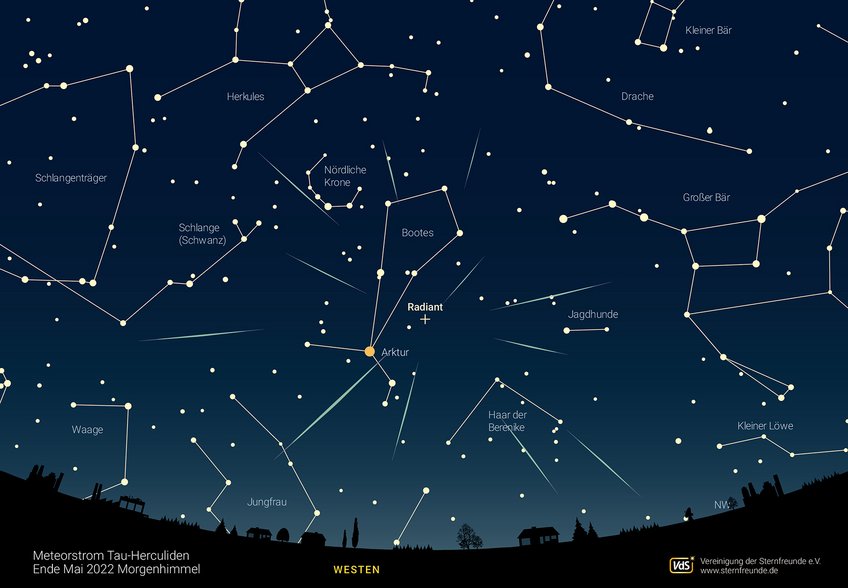Possible outburst of the Tau Herculids meteor shower
On 30 and 31 May 2022 the Earth passes a stripe of comet material
The Tau Herculid meteors visible from mid-May to mid-June are usually indistinguishable from sporadic shooting stars to laypeople. This year could be an exception: There is a possibility for a significant meteor shower during the night from 30 to 31 May.
On 30 and 31 May 2022, Earth will pass through an area of dust particles from comet Schwassmann-Wachmann 3 - observers may then see meteors in quick succession. Expected rate ranges from a few meteors per hour to shooting stars every minute or more. The most meteors are expected around 7 CEST on 31 May, but model calculations also show streaks of increased particle density for the hours before.

Observers in Germany can look out for relatively slow-moving shooting stars during the night of 30 to 31 May 2022. The Tau Herculids can light up practically anywhere in the sky, but how many meteors will actually be visible is not certain. If you backtrack their trail, they should come from the region west (right) of the constellation Bootes with the bright star Arcturus, which is high in the southwestern sky after midnight. An observing site without disturbing light sources is advised.
The short-period comet 73P/Schwassmann-Wachmann 3 was discovered in 1930 and disintegrated into several fragments at the end of 1995. Afterwards, fresh and dense dust tails were observed. These particles subsequently spread over a longer area, so that they finally reached Earth's orbit. Observations of the meteor shower will provide information about the release of dust from the comet as well as the speed at which the material is dispersed. For this purpose, the density, size distribution and orbits of individual meteor particles will be recorded. From this, an overall picture should be developed: How much dust comes from fresh comet break-up surfaces? How quickly do these particles leave the comet? Are there also larger chunks or only small dust particles among them? From 29 May, the activity of the Tau Herculids can be followed live online.
